The entry into traffic for South Western Railway’s Class 701s has been a painfully drawn-out affair, but now they are in traffic, Pip Dunn casts his critical eye over these new commuter trains.
In this article:
- The Class 701 trains, ordered by South Western Railway, took three and a half years from construction to passenger service due to cab design issues, software problems, and Network Rail’s caution.
- Designed for high-capacity commuter travel, the 701s feature 2+2 seating, minimal amenities, and rapid entry/exit doors but have firm seats and limited toilets.
- Despite delays, the trains offer smooth acceleration, good ride quality, and modern features, but the rail industry must address persistent delays in fleet rollouts.

The first Class 701 emerged from the Derby Litchurch Lane factory in June 2020, yet it was to be three and a half years before the first carried passengers.
Even by today’s standards of long lead times from construction to entry into traffic, that is extreme.
The trains are a 750V DC third rail variant of the Bombardier Aventra platform, which South Western Railway has named Arterio. They were seen as the replacement for the Class 442s, ‘455s’, ‘456s’, ‘458s’ and ‘707’ fleets. It was a massive order - 60 ten-car sets and 30 five-car sets (so 750 vehicles across the 90 units).
I’m told the similar Class 720s in use with Greater Anglia had cab interiors designed in consultation with the unions, but SWR chose not to do this. That (I am told) is the major factor as to why the trains took what seems like an eternity to enter traffic.
These apparent issues, combined with software problems and Network Rail’s caution in letting a new class on the network, led to the first ‘701s’ finally entering passenger use in January 2024. Even then, it was only on a very limited basis.
In fact, planning this train test was dependent on one of the new trains actually being out in passenger use on the day I wanted it to be. But the excellent Realtime Trains website (for which SWR thankfully and commendably details the actual units working trains), revealed that 701037 was booked to work the 1133 London Waterloo-Windsor & Eton Riverside, which it did. Time to get my tape measure out and start to take details.
Overview
The Class 701 is a bona fide commuter train, which means the aim is to pack in as many passengers as possible across its ten coaches. There’s no First Class, no buffet facilities - in fact, there’s not a lot to get overly excited about.
The set-up of the train is DMS (Driving Motor Standard), MS (Motor Standard), TS (Trailer Standard), MS, MS, MS, MS, TS, MS, DMS - so, two unpowered trailer coaches and eight powered coaches which have an unpowered bogie and a powered bogie with two traction motors. That gives 16 250kW traction motors to provide plenty of power (4,000kW) to move it (5,365hp if you prefer that metric).
The DMS coaches have 56 seats, the MSs have 60 seats, and the TSs have 34 seats plus some flip-down seats by the toilets.
Sixty seats might not seem a lot, but for a commuter train it’s all about offering a decent number of seats plus plenty of standing room.
So, those ten coaches have 560 seats across the whole train, of which 20 are flip-down seats - six each by the accessible toilets and four by the wheelchair areas.
Unlike many commuter trains, it has 2+2 seating throughout. The 3+2 seating might allow more ‘bums on seats’, but 2+2 allows for wider aisles where people can stand, should they have to. Given most train operating companies are moving away from 3+2, it would suggest that 2+2 is now the preferred seating set-up even for commuter trains.
Most of the seats, which are 46cm off the floor, are in airline style. However, in between the six sets of opposing seats, there are small half-tables which are 40cm x 43cm in size and 72cm off the ground. These tables will fit a couple of morning take-away coffees and very little else. They aren’t really that great for working with a laptop.
The seats themselves are 45cm wide and have a depth of just 36cm, with an 84cm seat back that incorporates the headrest, which is 25cm deep. There are understandably no arm rests, but there are grab handles on the corner of each pair of seats to steady those walking down (or simply standing in) the aisle when the train is on the move.
There is 50cm from one seat edge to the opposing seat edge, and in the airline seat there is just 26cm of leg room (although the priority seats have 34cms). The aisle width is 80cm and the headroom in the saloons is 210cm.
The seats are typically (and depressingly) too hard for comfort. I don’t understand why it seems that all new trains simply have to have rock-hard seats - you can’t imagine car manufacturers giving their products such uncomfortable seats. For the future, please can proper comfortable seats be specified from the get-go?
These days, a mandatory requirement of any new passenger train is power sockets for charging phones (especially) and laptops (perhaps less so on this type of train).
There is one three-pin plug socket for each pair of seats, joined by two USB Type 3 sockets.
These are low, under and in between the seats, which means scrabbling around trying to find the socket without potentially annoying the passenger next to you.
However, putting them to the side under the window has drawbacks as well - there is no perfect solution for their positioning. The good thing is that the airline seats have the same number of sockets as the bays of four seats.
The floor is vinyl throughout. The expense of carpet has been deemed not worth it for a commuter train.
There are four sets of sliding double-doors per coach - 1/3 and 2/3 along the body, which allows rapid entry and exit of passengers to reduce station dwell times.
The doors are 23cm above the platform (at least, they were at Windsor & Eton Riverside), and there is a width of 150cm when opened.
Note that the doors do not open automatically - you have to press a button to open them from either inside or outside, and it takes a couple of seconds from pressing it before they open.
They then remain open for 45 seconds before closing automatically if there has been no interference with them. The driver can opt to close them before the 45 seconds if required, by using the cameras to check along the length of the train.
It only takes three seconds for them to close. There are audible warnings when the doors are unlocked, and visual red light warnings when they are closing.
The vestibules are 252cm wide, 250cm deep and 210cm wide, so plenty of room for passengers to stand either waiting to alight or simply if the train is packed.
There are three full-height vertical grab poles here, but no partitions. In fact, the vestibules are huge - and because there are no partitions, they extend that little bit further, which gives the train more of a metro feel about it.
There are also two ‘cupboards’ for equipment with wide ‘bum seats’ just behind the main vestibule area. Grab handles are by each door.
There are eight slightly tinted windows on each side of each coach apart from the DMSs, which have seven. They are 130cm wide and 83cm high, although some have external dot matrix information displays mounted in them, which drops that height to 63cm.
The seat to window match-up is predictably poor, but that’s what you expect in this day and age. And there are no blinds or curtains - again, wholly expected in a commuter train.
Bin provision is poor - just one per vestibule - and they have horrible snappy lids. But they are, I guess, fit for purpose. And I hope that once these new train are ‘broken in’ a bit, they might not be so snappy.
CCTV and smoke detectors are fitted, and there are two passenger information screens in the ceilings of each coach which use LCDs to show destination, station stops, next station and other useful information. They are very metro in style.
Pre-recorded announcements are also used to help passengers, while the driver or guard can also make their own announcements if required.
Luggage space is not a major issue on a commuter train, especially one that won’t be serving airports. You would therefore not expect a huge amount of provision for luggage, certainly not for big items such as suitcases. However, the ability to put a small bag up in the luggage rack is vital to free up seats.
For the Class 701s, there is one overhead luggage rack per section of the coach, with the longest one in the middle split into three sections. They are either 160cm or 180cm long, and have a 34cm depth and a 33ccm height, so they will take a briefcase (does anyone use a briefcase these days?) a laptop bag, or a small holdall.
There are no free-standing end-of-saloon luggage racks for cases. But I would argue that luggage rack provision is spot on for this type of train.
Toilets
There are only two toilets across the entire train, both of them accessible for wheelchairs.
You might think that is inadequate - but given the trains are mass people movers with many passengers only on for about half an hour or so, it’s probably fine. The one time it might be a strain is late at night, when the pubs have just chucked out in central London…
It takes six seconds for the sliding toilet door to open fully from the pressing of the button. It starts to close automatically after 45 seconds, taking six seconds to close. The doors are 88cm wide.
There were no audible warnings (that I heard!), and there is a green light to say the door can be closed. If the door is interrupted while closing, it will stop and reopen again, so if you are in a wheelchair and struggling to get out in the allotted time, it (hopefully) won’t cause you any inconvenience.
The hand-operated lock clunks when it’s locked, which is a feature that (thankfully) most train builders plump for now. Inside the cubicle there is a coat hook, two mirrors, a bin, and two call for aid buttons.
There is (obviously) a wash basin with soap, water and hand dryer, but also a nappy changing table which is 57cm wide and 80cm long. It has no side lips, but it does have a strap and lowers (admittedly very slowly) by gravity. You’ll probably want to help it along to get it into place more quickly!
Opposite the accessible toilet is an overhead steady rail with three loops in it per side.
Other features
Being a commuter train, there are few other features of note. But there is space to store two bikes in each TS coach (by the toilets, so four bikes can be carried).
You’ll inevitably find cyclists bringing their bikes on board and dumping them in the vestibules, but there’s not a lot SWR can do about that.
The bike storage spaces have straps and a single wheel holder, so the bike won’t rattle around on the move.
The ride experience
Being a ten-coach train, there are nine corridor connections which are 104cm long, 56cm wide, and with four grab handles around them.
Lighting in the saloons throughout the train is very good, even in the corridor connections.
It’s relatively quiet in the saloon and the ride is good - understandably a little bouncier over the bogies, but better than many other recent train designs. Acceleration is also very smooth.
The air-conditioning was working a treat on what was quite a hot day, so overall the train was a pleasant travel experience.
I should stress, however, that my journey was at lunchtime on a quiet route. If you are forced to stand in the morning peak, the journey might not be so pleasurable, although that’s not down to the design of the train, but rather the likely demand for its use at certain times.
The delay in getting ‘701s’ into traffic won’t be helped by the need to train 800 drivers on the type, at nine days a time.
Another issue (the guard on one of the trains told me) was that there is no ‘safe space’ for the guard to retreat to in the event of an incident or after a confrontation with an unruly passenger.
However, the passengers I spoke to seem impressed with the trains, although most were having only their first trip on one.
Conclusions
This is a commuter train, and therefore is not awash with features and frills.
It’s pretty basic inside because the job it does is just that - pretty basic, shifting large numbers of people for relatively short journeys.
You wouldn’t want to travel on a Class 701 from Waterloo to Bournemouth, but nor will you. It is a replacement for the aged Class 455s, which have served us well for over 40 years.
The ‘701’ is a good train. Its deficiencies are not the train itself, but rather the procedure that has seen it delayed into traffic by so long.
In the 30 years I’ve been reporting on new train orders, I cannot think of a single multiple unit fleet that has been delivered and accepted into traffic on time.
This is a wider issue that the railway needs to address. Are trains overly complicated? Are deadlines unrealistic? Are builders taking on too much? Are the operators/unions being too picky? Whatever the reasons, the rail industry needs to up its game for the benefit of passengers.
On the whole, the Class 701 is a competent train for the job it is designed to do ,and an improvement on a Class 455 and the original Class 458s. But can’t we get the full fleet into traffic pretty sharpish, now that the first units have proved themselves?
Want to read more? Subscribe today and never miss an issue of RAIL. With a Print + Digital subscription, you’ll get each issue delivered to your door for FREE (UK only). Plus, enjoy an exclusive monthly e-newsletter from the Editor, rewards, discounts and prizes, AND full access to the latest and previous issues via the app.


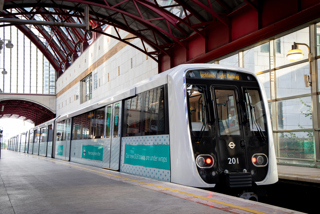
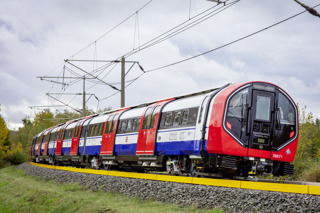

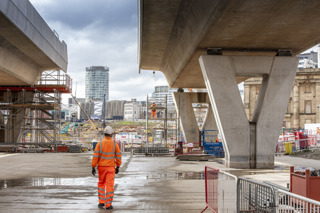
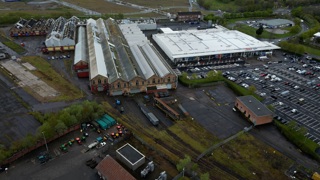



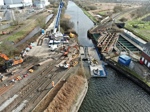







Login to comment
Comments
No comments have been made yet.